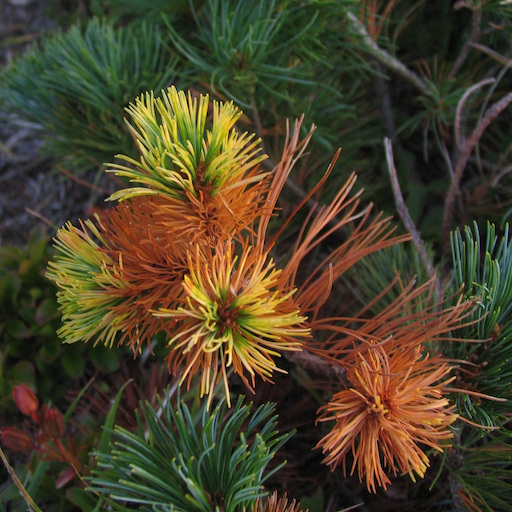Chujan G. N., Bykasov V. E. The Morphology and Sediments of the Northern Part of the Avacha bay. PACON 99 abstracts. Humanity and the World Ocean. Interdependence at the New Millennium. Russian Academy of Sciences / Moscow. Russia. 1999. P. 114.
THE MORPHOLOGY AND SEDIMENTS OF THE NORTHERN PART OF THE AVACHA BAY
G.N.Chujan1 and V.E.Bykasov2
1Kamchatka Institute of Ecology, Far East Branch, Russian Academy of Sciences
Petropavlosk-Kamchatsky, Kamchatka, Russia
2Institute of Volcanology, Far East Branch, Russian Academy of Sciences
Petropavlovsk-Kamchatsky, Kamchatka, Russia
The morphology of the Avacha bay bottom is rather simple and clearly compared with the corresponding parts of the ocean coast. 20-meters isobath crosses the area at different distances from the coast line, and it is at this depth where the major wave processing and sorting out of the sediment matter occurs. A 20-meters isobath goes only one mile off the coast all the way from the Mayachny cape to the mouth of the river of Khalatyrka with its elevated and cliffy coast, and therefore, correspondingly, the bottom sediments are represented mainly by 77,8% pebble-and-gravel with a minor addition of different grain-size sand. In the area of the Khalatyrsky sandcoast lowlands which are indented by numerous mouths of the rivers bringing to the bay mostly sand drifts, the above-mentioned isobath goes away from the coast line up to two and more miles. And, finally, once more the 20-meters isobath comes close to the coast up to one mile and the gravel-and-pebble portion increases all the way from the Nalychevo cape to the Schypunsky cape, where the coast becomes cliffy and high again.On the whole, the Avacha bay northern part sediments are represented mostly by the terrigenic sand matter, among which terrigenic fractionary, terrigenic-biogenic and terrigenic-pyroclastic (volcano-genic) substance-genetic sediment types stand apart, which are accumulated in exclusively dynamic and complicated natural conditions.
Thus, grain-metric and other researches analysis proves that the formation of the sediment cover of the area under investigation occurs mostly at the expense of transporting soft matter from the dry land in the form of suspended drift brought by the current of the rivers that flow into the bay, and also as a result of the coast line abrasion. Especially worthy of note is the role of the volcano-genic matter brought into the sedimentation area by both the air route at the time of the erruption of Avachinsky, Karymsky, Gorely, Ksudach and some other southern Kamchatka volcanoes, and as a result of its being carried out by the river and land flow. In particular, attention is attracted to the intensive carrying out of the volcanites by the river of Nalychevo, the sources of which wash away the areas of the hydrotermally changed rocks of the Avachinsky and Zhupanovsky chain volcanoes. As a result, its yellow-whitish waters stand in sharp contrast in the sea water for several miles off the coast. An important role is also played by the living beings (molluscs, etc.). The portion of their died-off parts amounts to 20% in some types of sediments.
МОРФОЛОГИЯ И ОСАДКИ СЕВЕРНОЙ ЧАСТИ АВАЧИНСКОГО ЗАЛИВА
Морфология дна Авачинского залива довольно проста и отчётливо сопоставляется с соответствующими участками океанического берега. На всём протяжении исследуемого района 20-метровая изобата, а именно на этих глубинах осуществляется основная волновая переработка осадочного материала и его сортировка, .проходит на разных расстояниях от береговой линии. На протяжении от мыса Маячный и до устья реки Халактырки, где берег высокий и скалистый, изобата в 20 м проходит всего в одной миле от берега и потому, соответственно, донные осадки представлены здесь преимущественно (77,8%) гравийно-галечным материалом с незначительной примесью разнозернистого песка. На участке, где располагается низменность Халактырского песчаного пляжа, изрезанного многочисленными устьями рек, выносящими в залив преимущественно песчаные наносы, названная изобата удаляется от береговой линии на расстояние до 2 и более миль. И, наконец, от мыса Налычево и до мыса Шипунского, где берег вновь становится скалистым и высоким, 20-метровая изобата снова приближается к берегу на расстояние до одной мили, а в осадках опять возрастает доля гравийно-галечникового материала.
В целом, осадки северной части Авачинского залива представлены преимущественно терригенным песчаным материалом, среди которого выделяются терригенные обломочные, терригенно-биогенные и терригенно-пирокластические (вулканогенные) вещественно-генетические типы осадков, накопление которых происходит в исключительно динамичных и сложных природных условиях.
Таким образом, анализ гранулометрических и прочих исследований показывает, что формирование осадочного чехла в исследуемом районе происходит преимущественно за счёт транспортировки с суши рыхлого материала в виде взвешенных и влекомых наносов реками, впадающими в залив, а также вследствие абразии береговой зоны. Особо стоит отметить существенную роль вулканогенного материала, поступающего в бассейн седиментации как аэральным путём при извержениях Авачинского, Карымского, Горелого, Ксудача и некоторых других вулканов юга Камчатки, так и в результате его выноса речным и наземным стоком. В частности, обращает на себя внимание интенсивный вынос вулканитов рекой Налычево, истоки которой размывают поля гидротермально-изменённых горных пород вулканов Авачинской и Жупановской вулканических групп, в результате чего её белесовато-жёлтые воды резко выделяются в морской воде на протяжении нескольких миль от берега. Важную роль в образовании осадков играют также и живые организмы, (моллюски и пр.), содержание отмерших частей которых в отдельных видах осадков доходит до 20%.

